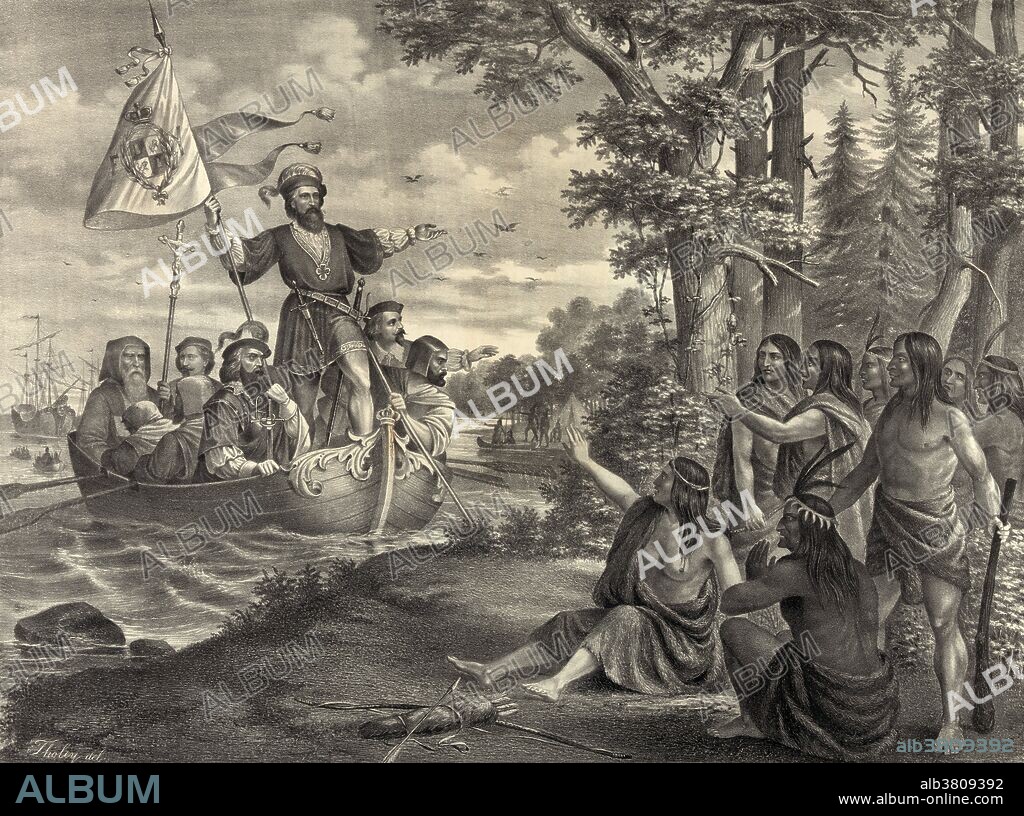alb3809392
Christopher Columbus Landing in New World, 1492

|
Añadir a otro lightbox |
|
Añadir a otro lightbox |



¿Ya tienes cuenta? Iniciar sesión
¿No tienes cuenta? Regístrate
Compra esta imagen.
Selecciona el uso:

Título:
Christopher Columbus Landing in New World, 1492
Descripción:
Ver traducción automática
Print entitled: "Landing of Christopher Columbus in America, at San Salvador, October 12th A.D. 1492." Christopher Columbus (October 30 or 31, 1451 - May 20, 1506) was an Italian explorer, colonizer, and navigator. He completed four voyages across the Atlantic Ocean that led to European awareness of the American continents. During his first voyage in 1492, instead of reaching Japan, he landed in the Bahamas archipelago, which he named San Salvador. Over the course of three more voyages, he visited the Greater and Lesser Antilles, the Caribbean coast of Colombia and Venezuela, claiming them for the Spanish Empire. His efforts to establish permanent settlements in the island of Hispaniola, started Spanish colonization, which foreshadowed the general European colonization of the "New World". Though Columbus was not the first European explorer to reach the Americas, his voyages led to the first lasting European contact with the Americas, inaugurating a period of European exploration, conquest, and colonization that lasted for several centuries.
Crédito:
Album / Science Source / Library of Congress
Autorizaciones:
Modelo: No - Propiedad: No
¿Preguntas relacionadas con los derechos?
¿Preguntas relacionadas con los derechos?
Tamaño imagen:
5100 x 3798 px | 55.4 MB
Tamaño impresión:
43.2 x 32.2 cm | 17.0 x 12.7 in (300 dpi)
Palabras clave:
AMERICA • AMERICANO • ARTE • ATERRIZAJE • BLANCO Y NEGRO • CATOLICO ROMANO • CATOLICO • COLONIZADOR • CRISTOBAL COLON • DESCUBRIDOR • DESCUBRIMIENTO • DIBUJO • ESTADOS UNIDOS DE AMERICA • ESTADOS UNIDOS • EUROPEA • EUROPEAS • EUROPEO • EUROPEOS • EXPLORACION • EXPLORADOR • FAMOSA • FAMOSO • FIGURA • GENTE • GRABADO • HISTORIA • HISTORICO • HOMBRE • HOMBRES • ILUSTRACION • IMPORTANTE • ITALIANO • LLEGADA • MASCULINO • NAVEGACION • NAVEGANTE • OBRA DE ARTE • PERSONA • PERSONALIDAD • PERSONALIDADES • RETRATO DE HOMBRE • S. -XV • SAN SALVADOR • TIERRA (TERRENO) • TRIPULANTE
 Pinterest
Pinterest Twitter
Twitter Facebook
Facebook Copiar enlace
Copiar enlace Email
Email
